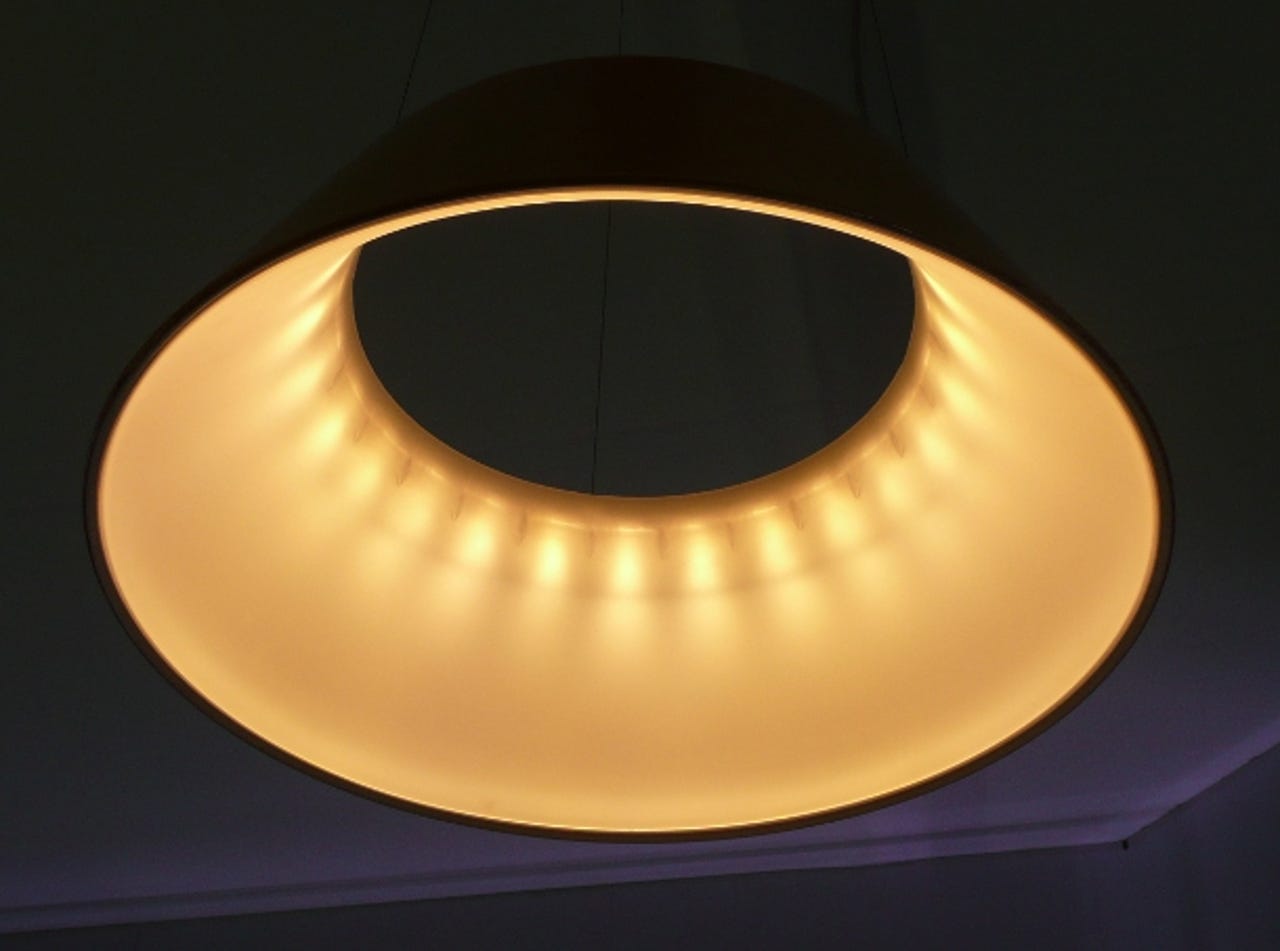House of the future: The tech that could soon make your home tick


Photos: High-tech home comforts at the Grand Designs Live show
As part of the Grand Designs Live show taking place at London's Excel centre this week, tech companies including Philips have been showing off their vision for the home of tomorrow.
The show's House of the Future exhibit features a range of gadgets that could be making their way into your kitchen, living room and even bedroom before long.
The lampshade shown above, the Cielo, is part of the Philips' Lirio LED-based light range. The Cielo integrates LEDs into the lampshade, doing away with the traditional bulb arrangement to become more energy efficient.
Photo credit: Tim Ferguson/silicon.com
Shown above is the LivingColors lamp which uses LED technology to alter the mood of a room.
Photo credit: Tim Ferguson/silicon.com
The colour of the light on top of the lamp and the brightness of the light below can be adjusted with a touch of the remote control.
Photo credit: Tim Ferguson/silicon.com
This is a Philips prototype showing how organic LED (OLED) technology can be used to create a desk lamp.
Photo credit: Tim Ferguson/silicon.com
Another OLED gadget is the Lumiblade Reflections mirror, which reacts to gestures made in front of it using infrared sensors.
The mirror features 70 OLED lights which switch off when the mirror detects the shape of a person standing in front of it. The person's silhouette is then reflected in the mirror, surrounded by lights.
The mirror is a limited edition and on sale for around £5,000.
Photo credit: Tim Ferguson/silicon.com
The house of the future display also explores new ways to power gadgets.
Technology devised by US-based company WiPower uses a transmitter located underneath the table to wirelessly power items on the surface - in this case, lightbulbs.
Photo credit: Tim Ferguson/silicon.com
The technology on show also extends to the bathroom with this sink made by Japanese company Toto.
The sink features a light, whose brightness can be adjusted, in the plug hole (left) and a temperature controller which can be rotated to change the water temperature (right), which changes colour depending on the heat of the water.
Photo credit: Tim Ferguson/silicon.com
Staying in the bathroom, the Innova mirror made by Roca contains a radio and MP3 player which can be controlled via an interface on the mirror's surface.
The mirror can also demist itself and displays information such as the time and outside temperature.
Photo credit: Tim Ferguson/silicon.com
Philips also had one of its 21:9 aspect ratio LED televisions in the display, which allows viewers to watch films in full widescreen format, doing away with the black bars seen on 16:9 aspect widescreen televisions.
Photo credit: Tim Ferguson/silicon.com
Moving to the kitchen, the Miele induction hob is able to heat food without getting hot itself.
An electrical current flows through the hob and makes the molecules in the bottom of a pan vibrate to such an extent they heat up the food contained within the pan. This method can save up to 40 per cent in energy according to Miele.
The extractor unit above is linked to the hob and adjusts suction speed in response to the temperature of the pan and food.
Photo credit: Tim Ferguson/silicon.com
The display also included a concept for an 'intelligent' wardrobe which opens its door as you approach it. It also features fingerprint recognition technology for opening drawers.
Photo credit: Tim Ferguson/silicon.com
There were also a few devices on show which were developed as part of the Electrolux Design Lab competition, including the Renew shown above.
The Renew is able to remove odour from clothes without washing them. The user passes the item of clothing through the slot in the device and it removes odours using a steam vapour.
Photo credit: Tim Ferguson/silicon.com
The Naturewash goes even further, using air containing negative ions to clean the clothes and removes stains without having to put the item in the washing machine.
You can even lie on the device while wearing the clothes and they'll be cleaned.
Grand Designs Live runs until 9 May.
Photo credit: Tim Ferguson/silicon.com